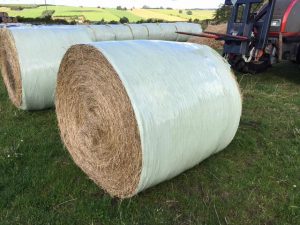 If you make a living as an animal or livestock farm owner, you know for a fact that storing big round bales outdoors is something you cannot avoid. As much as you want to keep your bales indoors, the sheer number of them means it is virtually impossible to do that. When you make those bales, you wrap them in some material, usually a net or plastic. There are numerous ways of wrapping bales with the help of modern baling wrap, but what’s the concept behind it?
If you make a living as an animal or livestock farm owner, you know for a fact that storing big round bales outdoors is something you cannot avoid. As much as you want to keep your bales indoors, the sheer number of them means it is virtually impossible to do that. When you make those bales, you wrap them in some material, usually a net or plastic. There are numerous ways of wrapping bales with the help of modern baling wrap, but what’s the concept behind it?
You often see farmers like you bale hay using large round shapes instead of opting for the conventional small square bales, and there is a practical reason for that. For one, creating large round bales require less effort compared to that of small square bales. Furthermore, the shape of the round bales makes it possible to store them outside without the fear of damage or deterioration. With square bales, you never will go for outdoor storage because the rain and snow will find their way inside and wreak havoc. The rounded or curved sides of the round bales allow water to run off without causing any damage or penetration.
When it comes to a baling wrap, farmers like you have three popular options – plastic wrap, net wrap, and the traditional twine. Be reminded that the choice you make is not about aesthetics or presentation. The two most crucial things to factor in are baling efficiency and storage, wherein the idea is that you must come up with a product that will help you store the feed or hay will last long without compromising its quality.
It is no secret that twine is the most affordable bailing material out there; it also is the oldest way to wrap bales. The problem with twine is that you will suffer from substantial losses during transportation, plus the fact that they bale wrapped in twine are prone to damage and deterioration during outdoor storage. It is true that they shed water, but not at the same level to that of the net or plastic varieties. If you use twine in baling and store your hay for an extended period, expect spoilage as well as degradation in the product’s nutritional value.
Arguably the most popular option today is the net wrap made from woven plastic. It is the only option which makes sense if you plan on storing your hay outside for an extended period. Also, choosing the net wrap over twine will benefit you in such a way that it reduces harvest and storage loss. It also requires lesser time to bale compared to twine, and you are even getting a better output regarding volume, something you would welcome with open arms when you’re storing food for your animals and livestock.